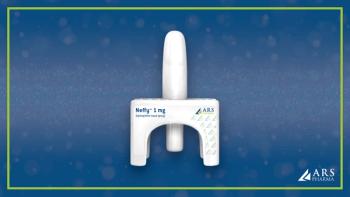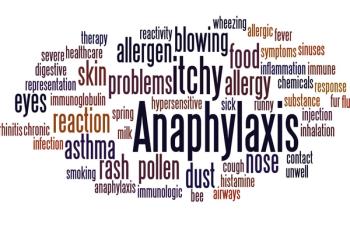
FDA Approves First Drug for the Treatment of Peanut Allergy in Children
The first and only drug to treat peanut allergy recently received approval, giving the growing number of patients a new treatment option.
The first and only oral immunotherapy for the treatment of peanut allergy
Palforzia (Peanut [Arachis hypogaea] Allergen Powder-dnfp) (Aimmune Therapeutics) is indicated for the mitigation of allergic reactions, including anaphylaxis, that can occur with accidental exposure to peanuts.
Palforzia may be initiated in patients aged 4-17 years who have a confirmed diagnosis of peanut allergy but may be continued in patients aged ≥4 years. Patients who take Palforzia must continue to avoid peanuts in their diets.
Approximately 1 million US children are affected by peanut allergy, but because there is no cure, patients are left to strictly avoid peanuts.
“Even with strict avoidance, inadvertent exposures can and do occur. When used in conjunction with peanut avoidance, Palforzia provides an FDA-approved treatment option to help reduce the risk of these allergic reactions in children with peanut allergy,” said Peter Marks, MD, PhD, director of the FDA’s Center for Biologics Evaluation and Research in the FDA press release.
Palforzia is a powder manufactured from peanuts and administered in 3 phases of dosing:
- Initial dose escalation: First 5 doses given on a single day by a healthcare professional in a healthcare setting.
- Up-dosing: 11 increasing dose levels administered over several months by a healthcare professional in a healthcare setting. If the patient tolerates the first dose of an increased dose level, they may continue the dose level daily at home.
- Maintenance: If a patient tolerates all dose levels given during up-dosing, then they may begin the daily maintenance dose of 300 mg.
A randomized, double-blind, placebo-controlled study was conducted in approximately 500 peanut-allergic patients to assess the effectiveness of Palforzia. The study evaluated the percentage of patients who tolerated an oral challenge with a 600 mg dose of peanut protein with no more than mild allergic symptoms after 6 months of maintenance treatment.
The study showed 67.2% of patients who received Palforzia tolerated a 600 mg dose of peanut protein vs 4% of placebo recipients.
Palforzia should only be administered by emptying and mixing the powder with a small amount of semisolid food. Patients should not swallow the capsules or inhale the powder. Palforzia cannot be used for the emergency treatment of allergic reactions, including anaphylaxis.
Palforzia is only available through specially certified physicians, healthcare settings, and pharmacies who are enrolled in the FDA-required Risk Evaluation and Mitigation Strategy to ensure they are properly educated on the risk of anaphylaxis associated with its use.
Stay in touch with Patient Care® Online:
→Subscribe to our
Newsletter
Enhance your clinical practice with the Patient Care newsletter, offering the latest evidence-based guidelines, diagnostic insights, and treatment strategies for primary care physicians.

































































































































































































































































































